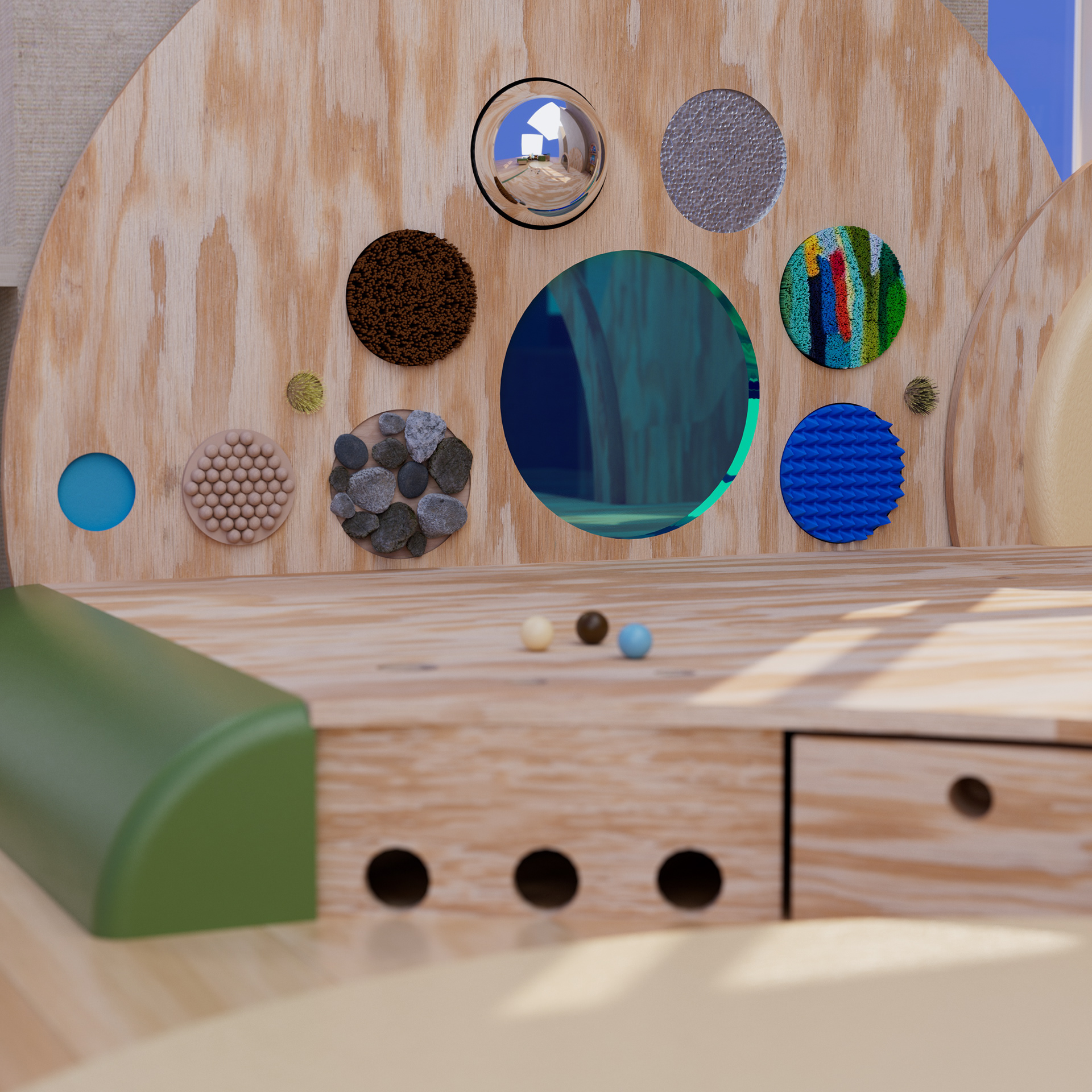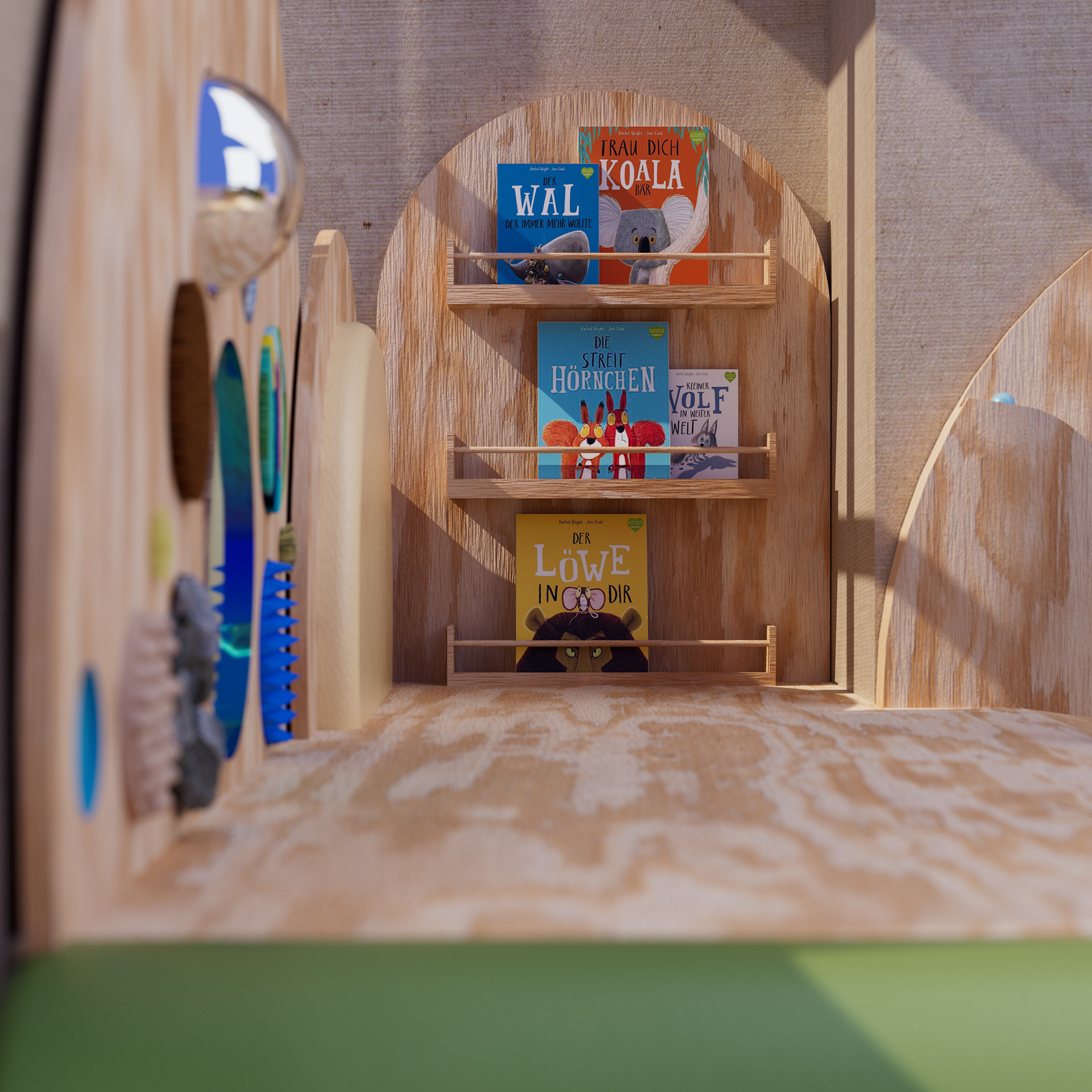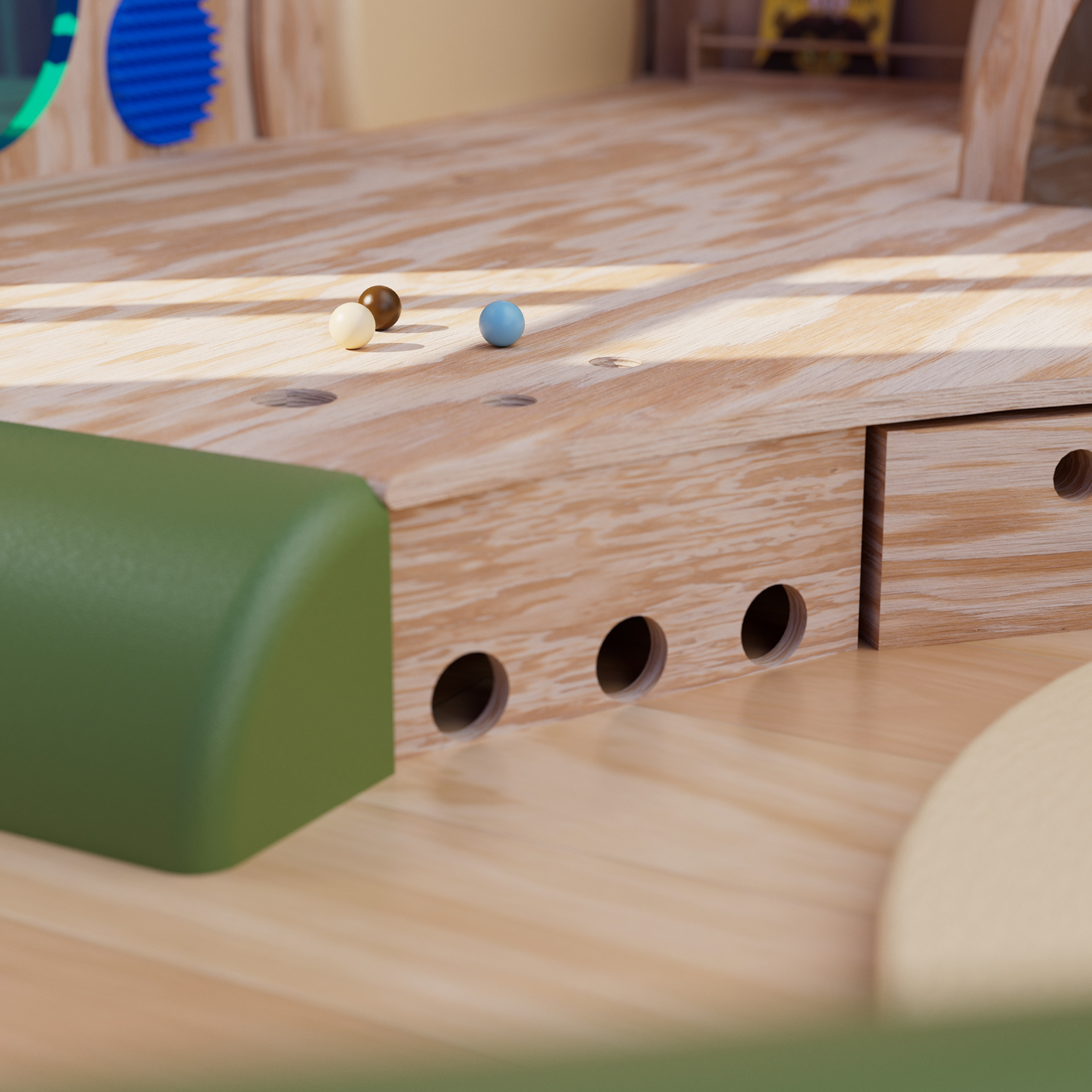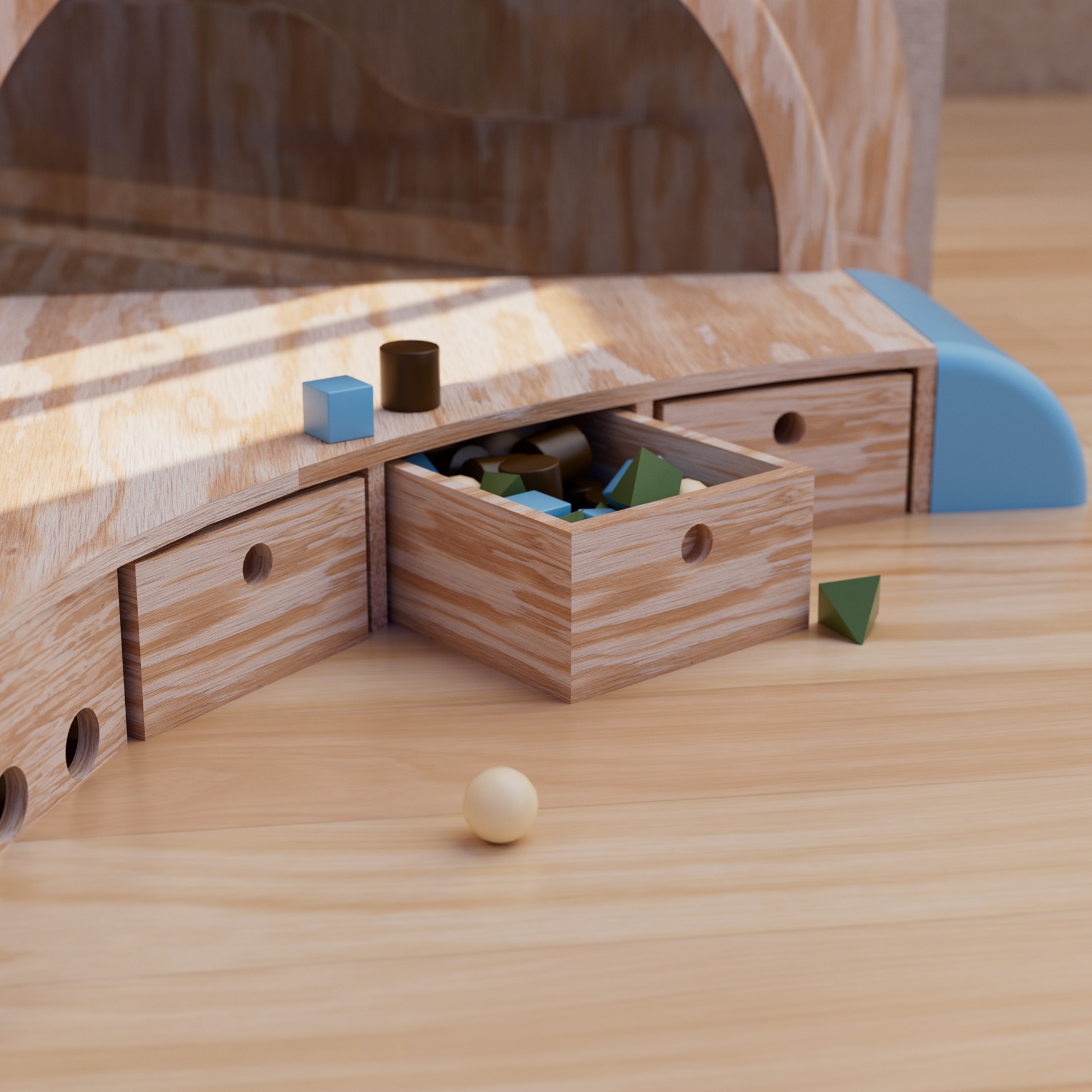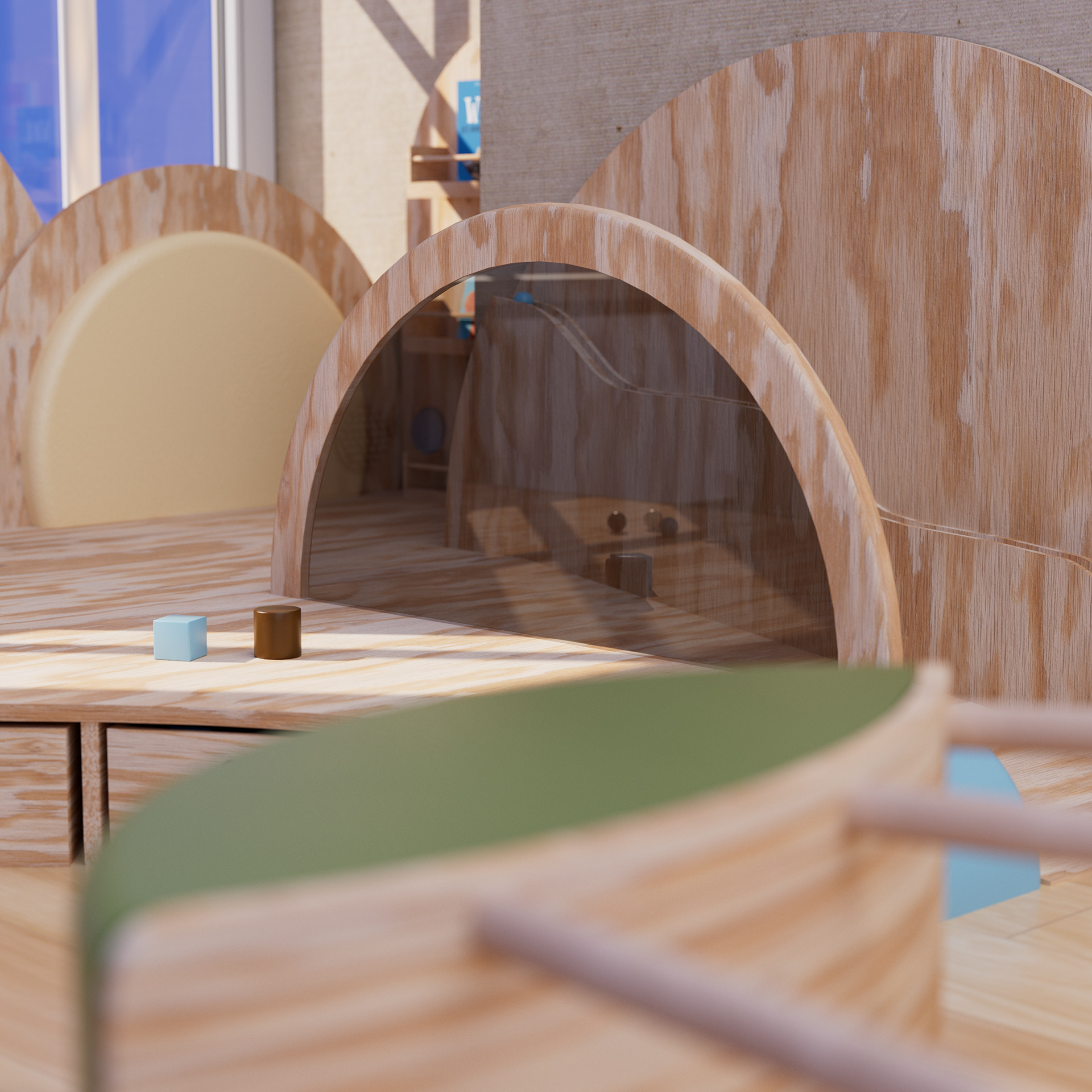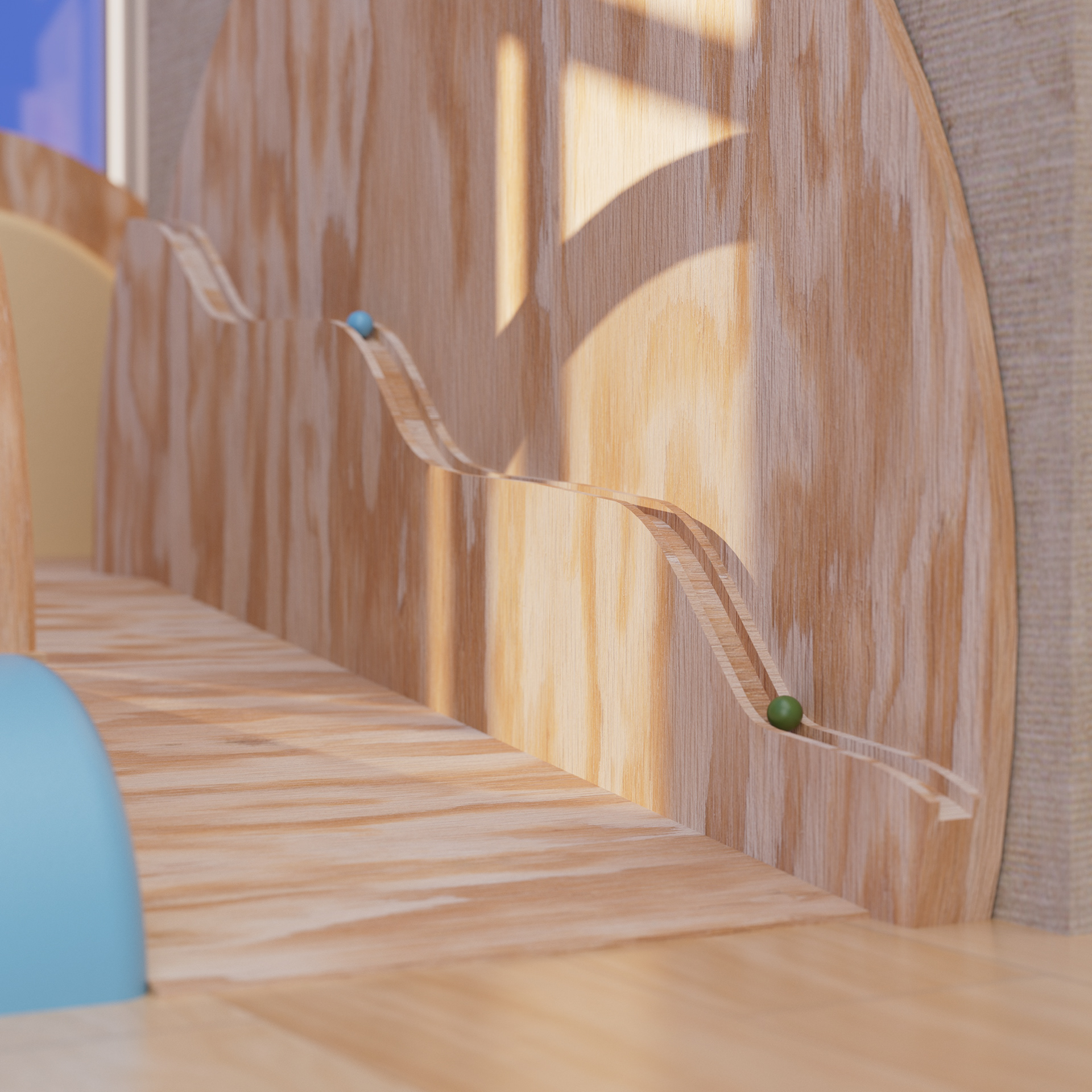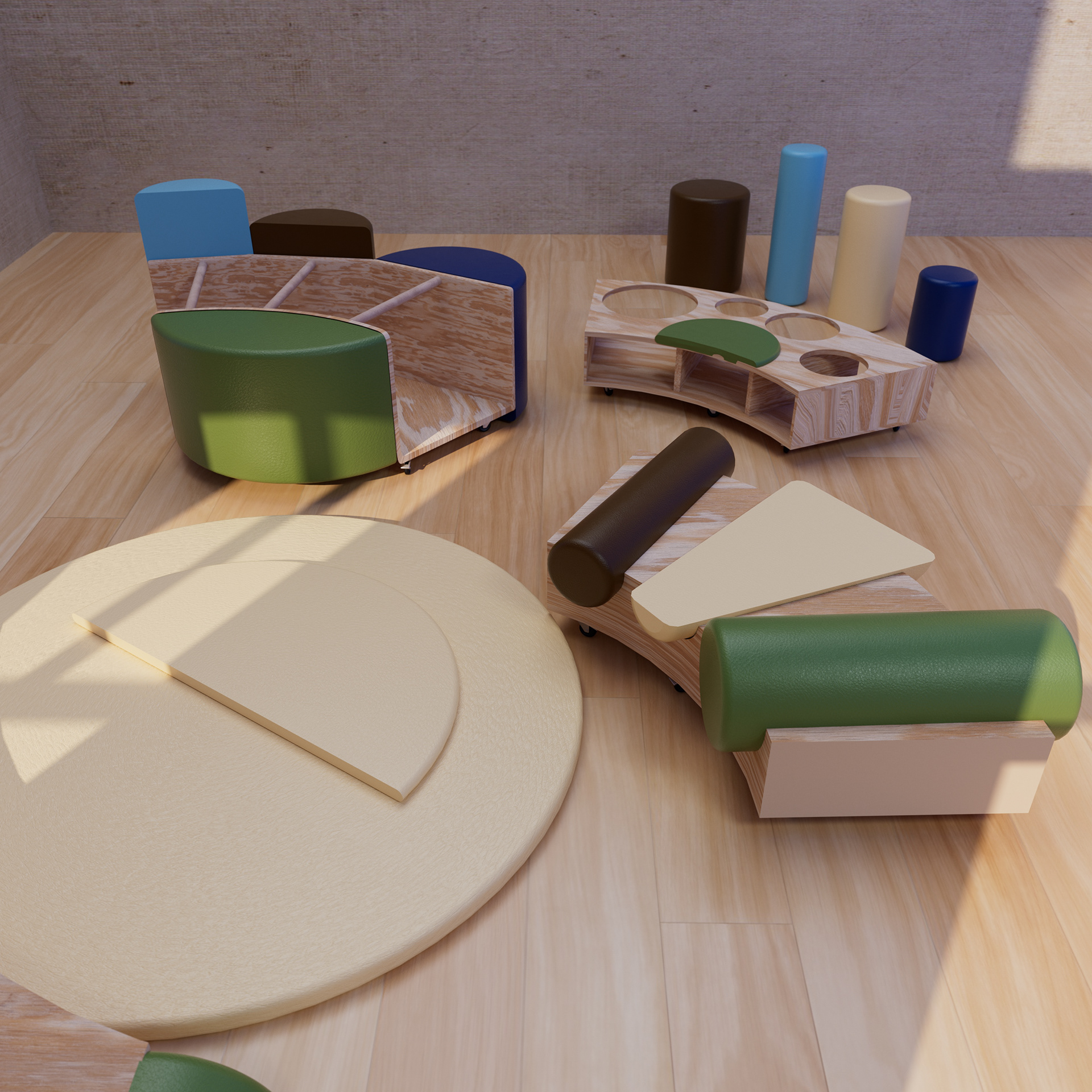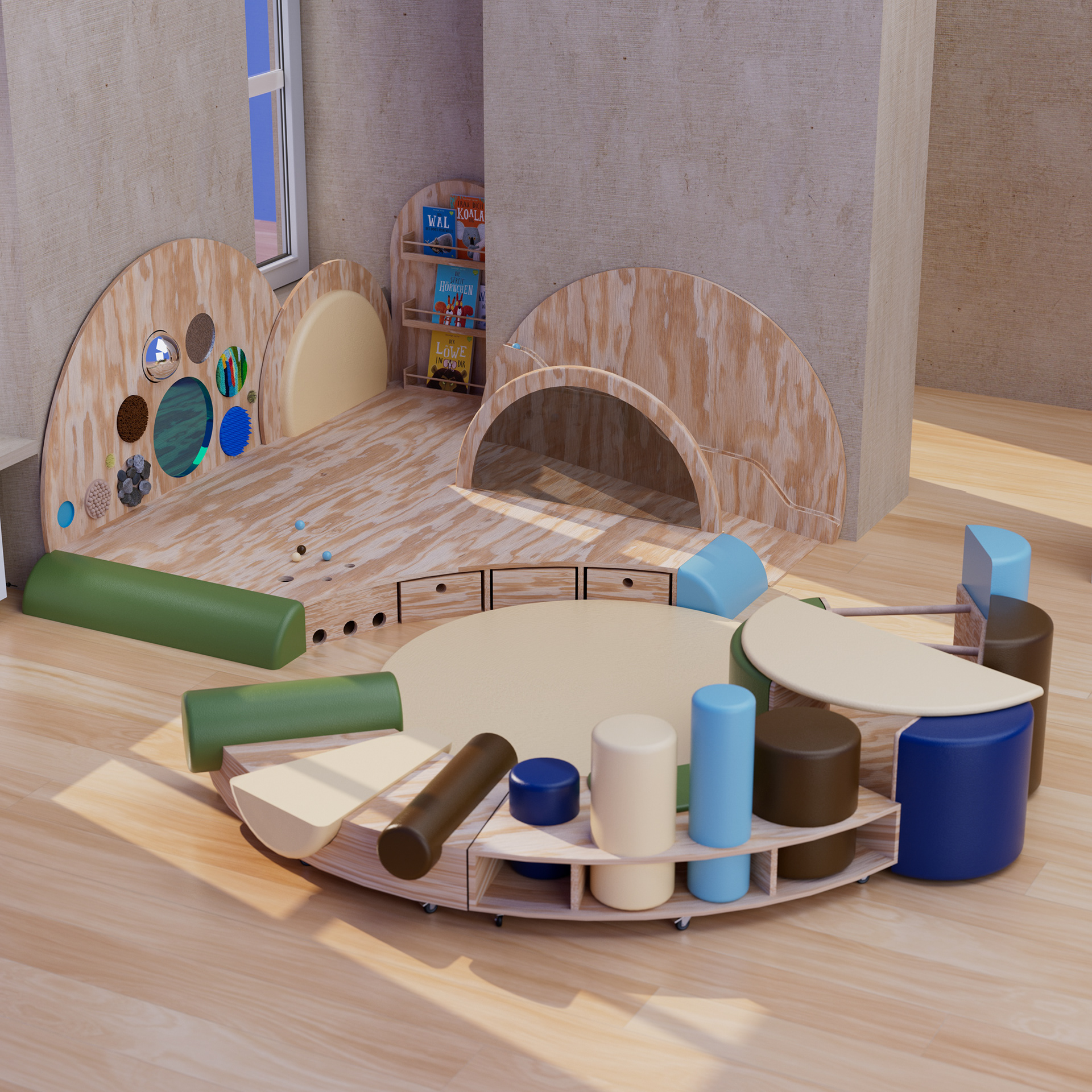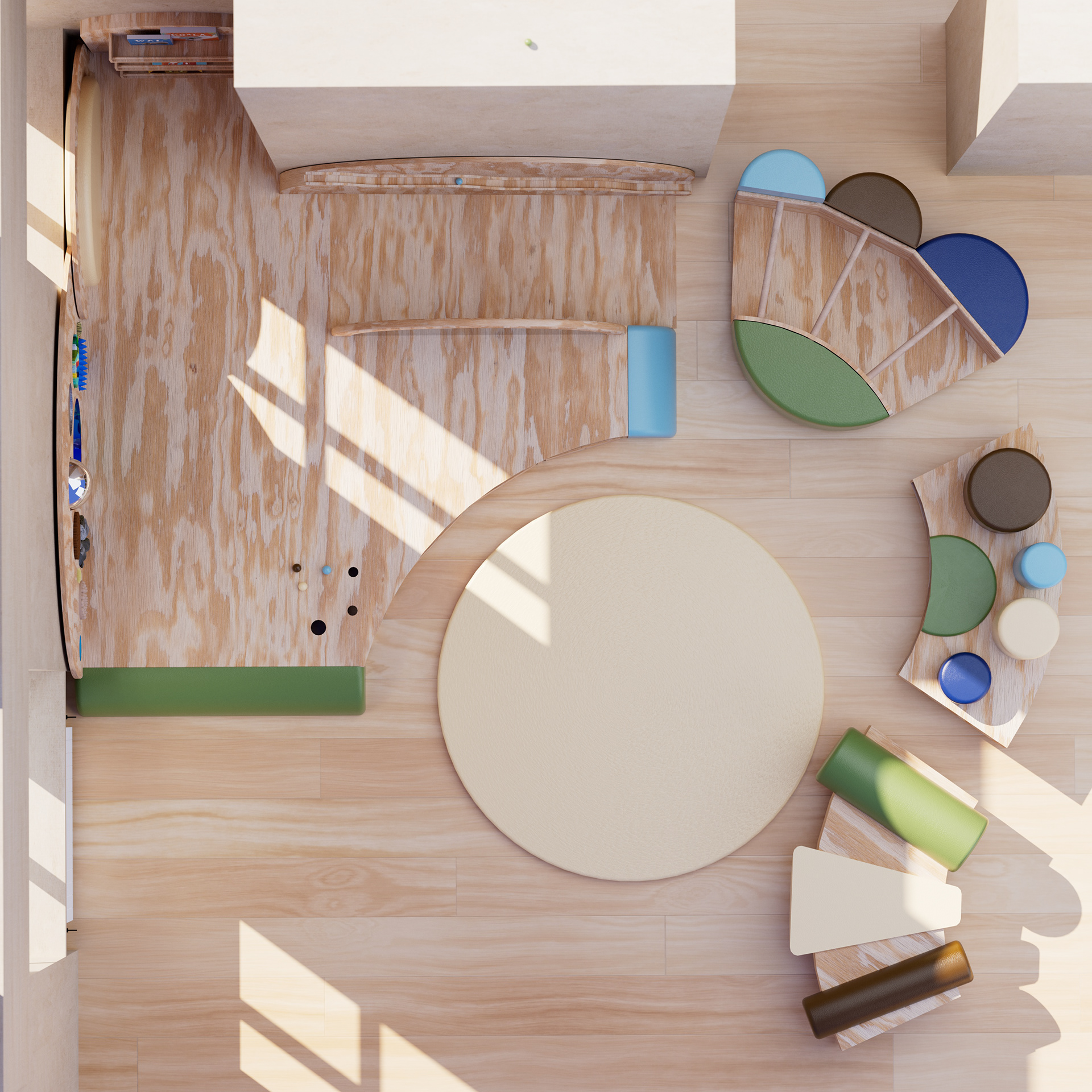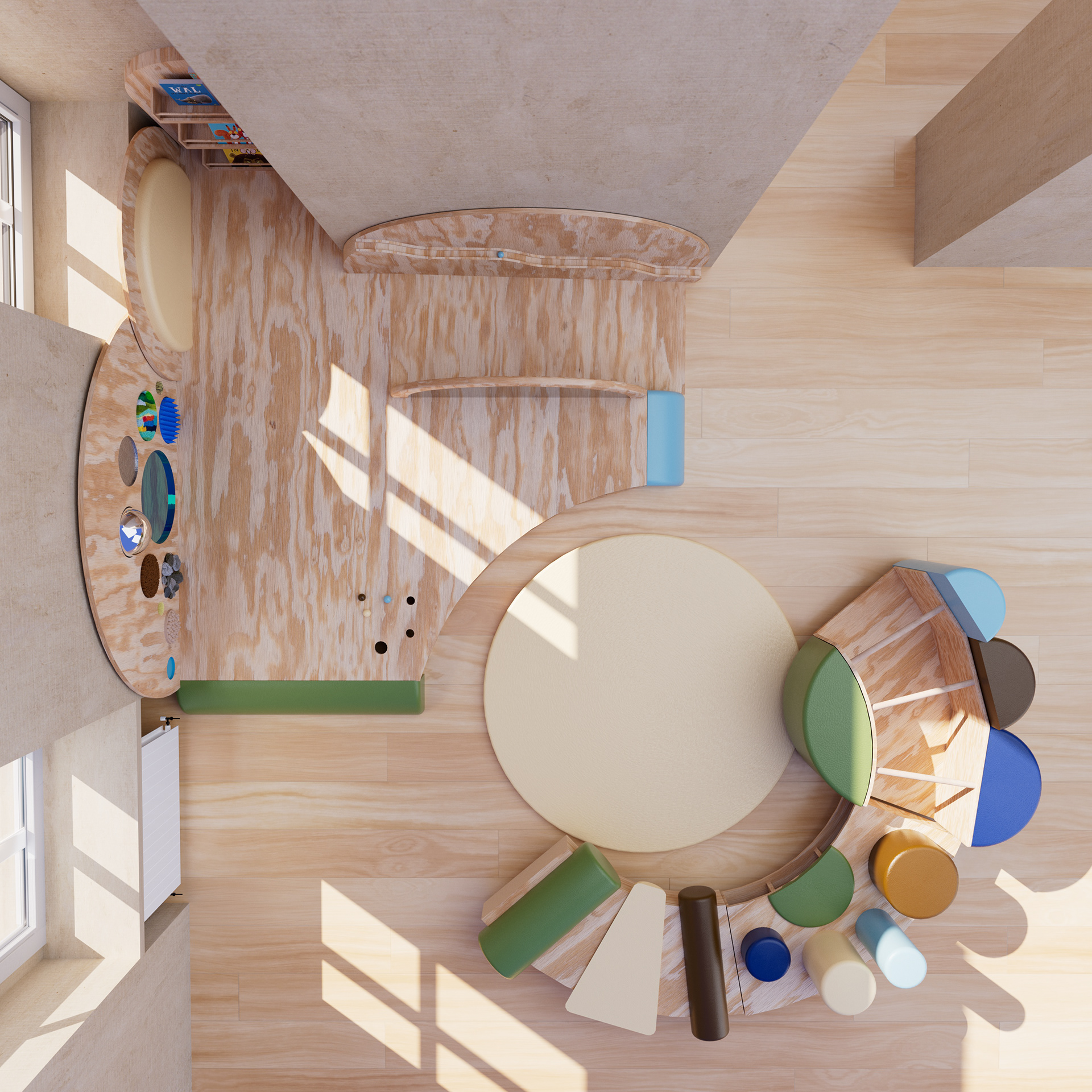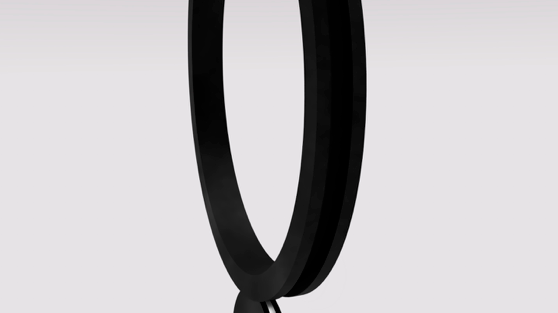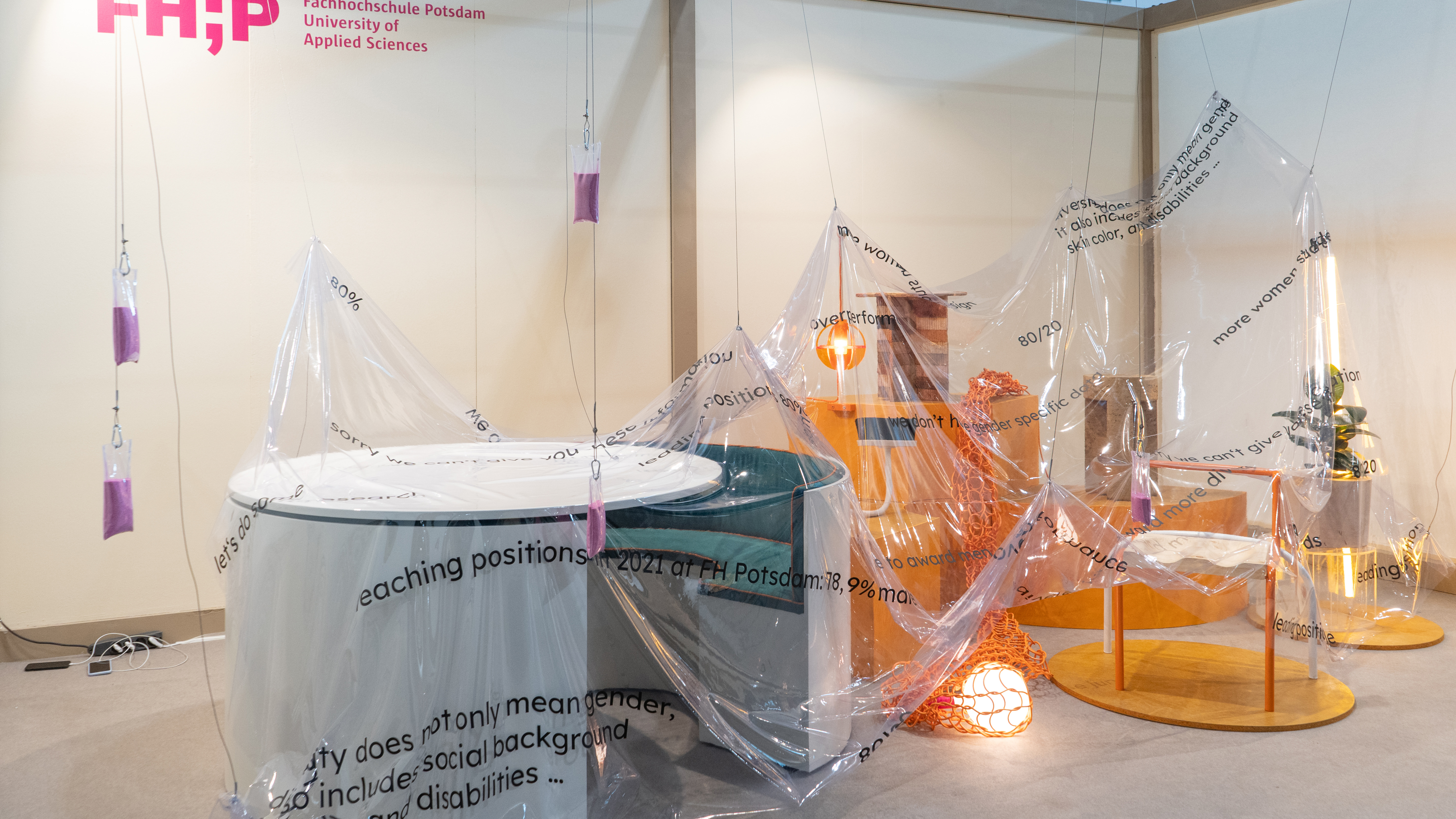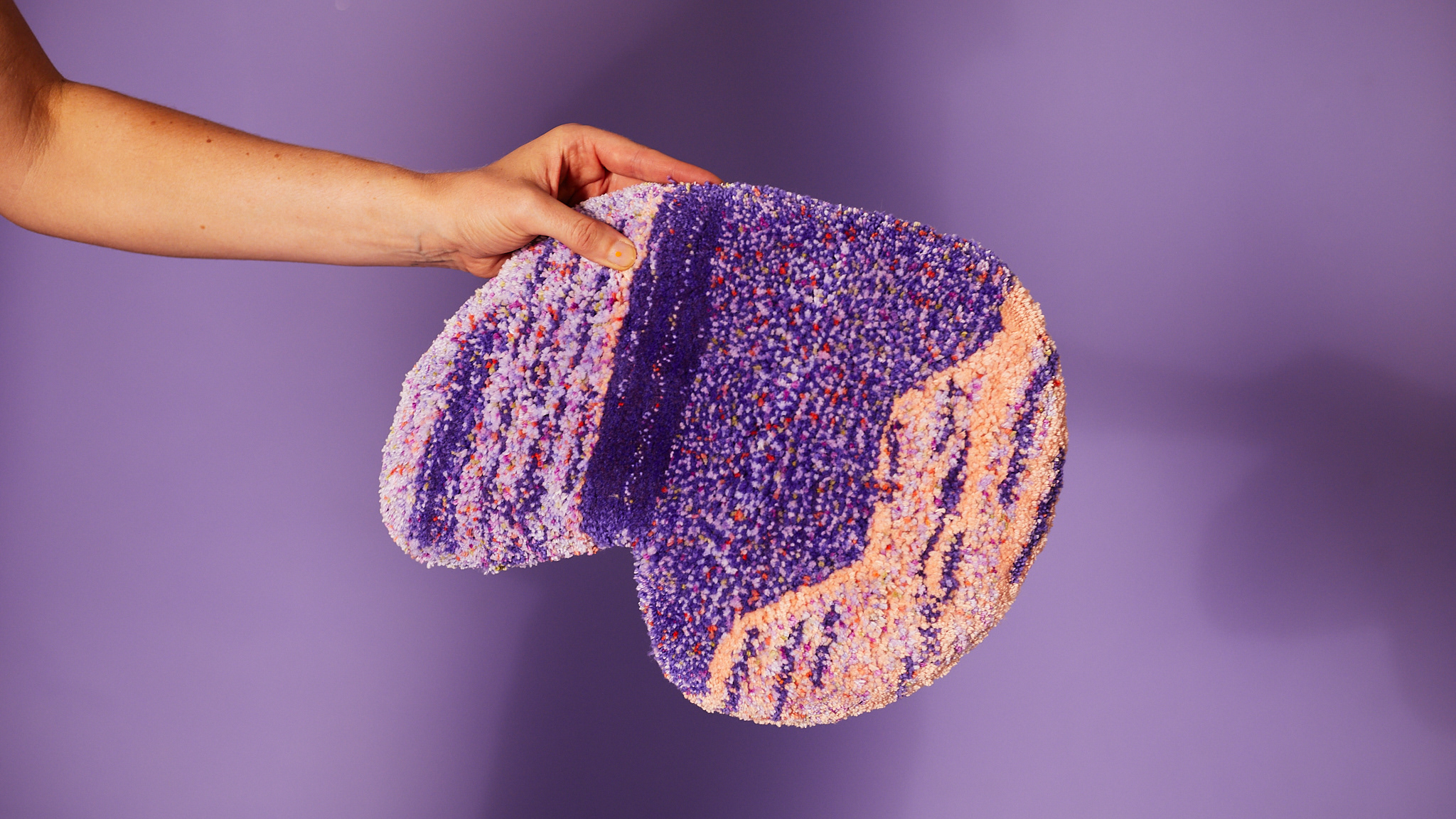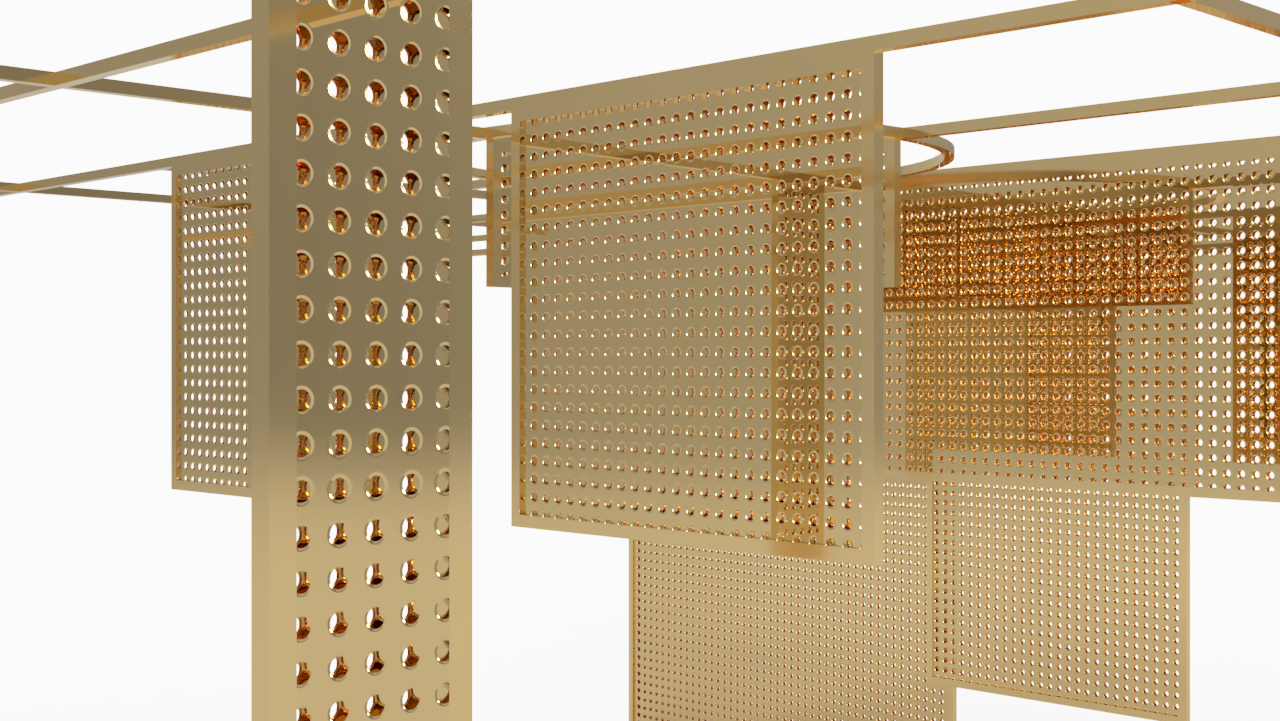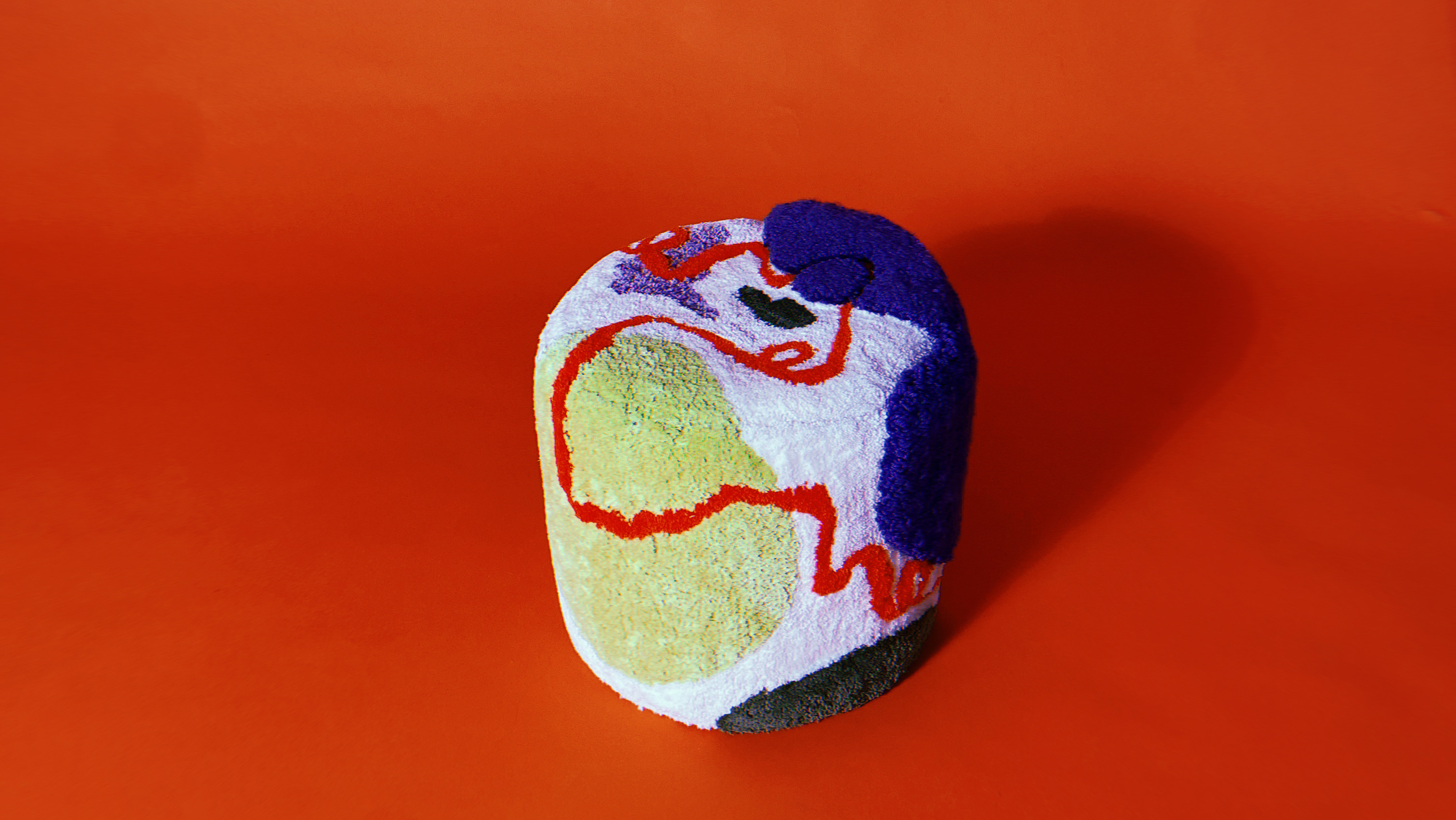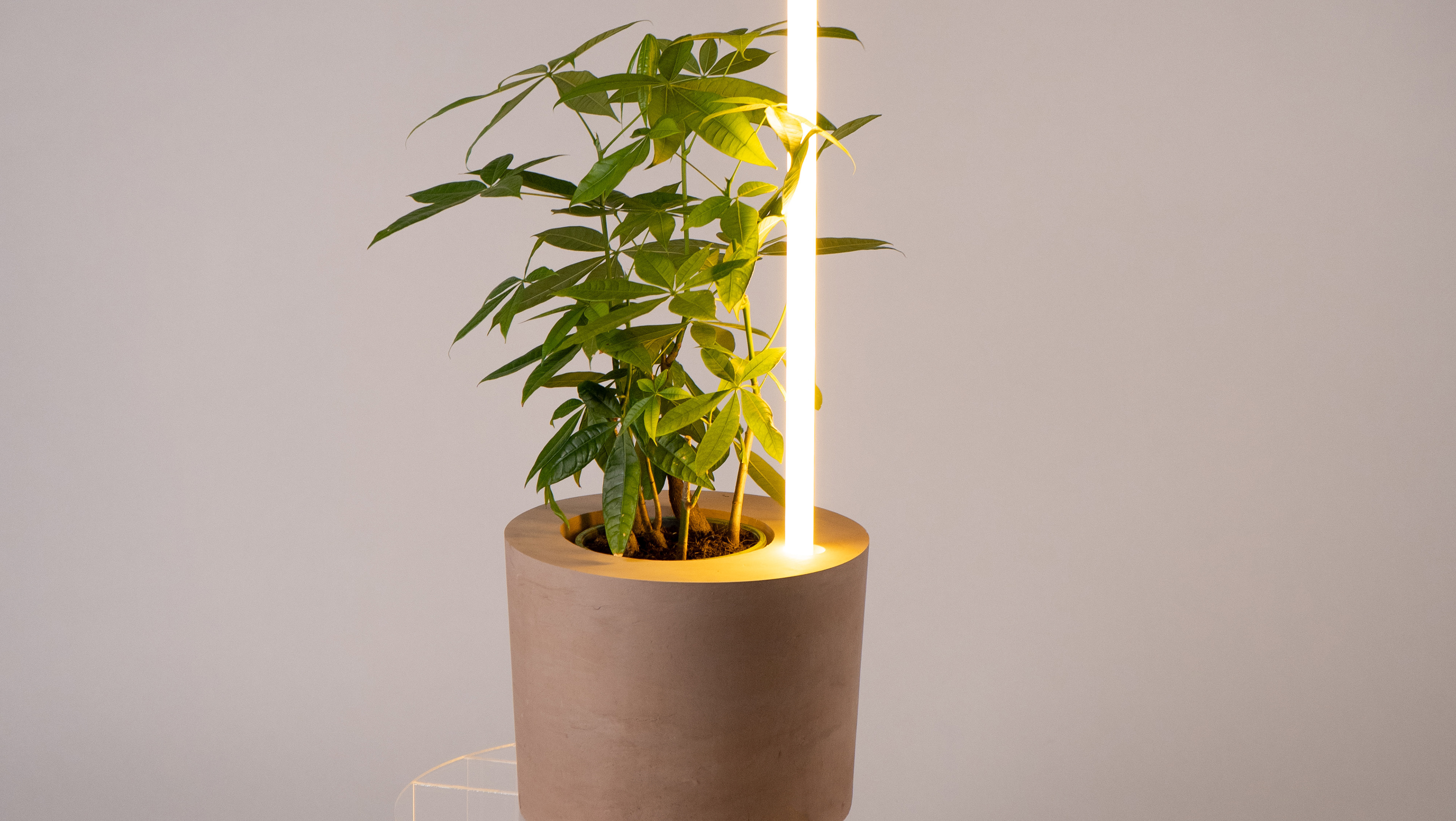Ronda Senso is an open furniture concept for a childcare, consisting of a low platform and an associated flexible and modular rolling furniture.
The name "Ronda Senso", Portuguese for 'round sense', refers to the round shapes and the different senses that can be addressed when using the furniture.
Everything goes hand in hand, because all the senses are connected.
This project was mainly about making better use of the space and better combining the different activities in the space sections.
My vision for the space was to create a more natural, open image, with harmonious colors and shapes that are in harmony with function. First and foremost a space for movement, but also a place to relax, play, read, discover, hide, stash, build, balance, climb, interact. All this is possible with this furniture.
My vision for the space was to create a more natural, open image, with harmonious colors and shapes that are in harmony with function. First and foremost a space for movement, but also a place to relax, play, read, discover, hide, stash, build, balance, climb, interact. All this is possible with this furniture.
With a Kita furniture not only the play and movement factor counts, but the safety is above all, so there are many different types of padding in and on the object to protect the edges and in case of falls.
The daycare center has a forest approach, which means that it deals a lot with the topics of forest and nature and from the age of 4, the children go to the forest 3 times a week.
That's why I chose a natural color scheme and wood as the main construction material.Not only the forest approach but also the combination of the different pedagogical approaches of Montessori, Reggio and also Pikler are used daily in the daycare. The focus is on children aged 1-3 years who need freedom of movement, because freedom means for children under 3 years, first and foremost the freedom to move. All 3 pedagogical directions include the important points of sensory perception and movement. But also the use of natural materials.
Not only the forest approach but also the combination of the different pedagogical approaches of Montessori, Reggio and also Pikler are used daily in the daycare. The focus is on children aged 1-3 years who need freedom of movement, because freedom means for children under 3 years, first and foremost the freedom to move. All 3 pedagogical directions include the important points of sensory perception and movement. But also the use of natural materials.
The independent use is in the foreground of my project, the children are animated to touch, to try out, to get in contact and to feel and discover the natural material wood every day. Since the platform can be climbed by its low height very well for toddlers, they can decide for themselves whether they want to crawl up, run or climb, it is possible from all sides.
The accompanying flexible rolling furniture, which consists of 3 parts, is a nice add on for the fixed platform. It brings even more color and movement in the room. However, one recognizes form-specific the affiliation through the reuse of the roundness in the whole, and also the round or semicircular upholstery.
It was important to me to design something movable in addition to the fixed component, which can be used in many ways.
Not only for the children, but also for the educators to sit.
The daycare center has a forest approach, which means that it deals a lot with the topics of forest and nature and from the age of 4, the children go to the forest 3 times a week.
That's why I chose a natural color scheme and wood as the main construction material.Not only the forest approach but also the combination of the different pedagogical approaches of Montessori, Reggio and also Pikler are used daily in the daycare. The focus is on children aged 1-3 years who need freedom of movement, because freedom means for children under 3 years, first and foremost the freedom to move. All 3 pedagogical directions include the important points of sensory perception and movement. But also the use of natural materials.
Not only the forest approach but also the combination of the different pedagogical approaches of Montessori, Reggio and also Pikler are used daily in the daycare. The focus is on children aged 1-3 years who need freedom of movement, because freedom means for children under 3 years, first and foremost the freedom to move. All 3 pedagogical directions include the important points of sensory perception and movement. But also the use of natural materials.
The independent use is in the foreground of my project, the children are animated to touch, to try out, to get in contact and to feel and discover the natural material wood every day. Since the platform can be climbed by its low height very well for toddlers, they can decide for themselves whether they want to crawl up, run or climb, it is possible from all sides.
The accompanying flexible rolling furniture, which consists of 3 parts, is a nice add on for the fixed platform. It brings even more color and movement in the room. However, one recognizes form-specific the affiliation through the reuse of the roundness in the whole, and also the round or semicircular upholstery.
It was important to me to design something movable in addition to the fixed component, which can be used in many ways.
Not only for the children, but also for the educators to sit.
